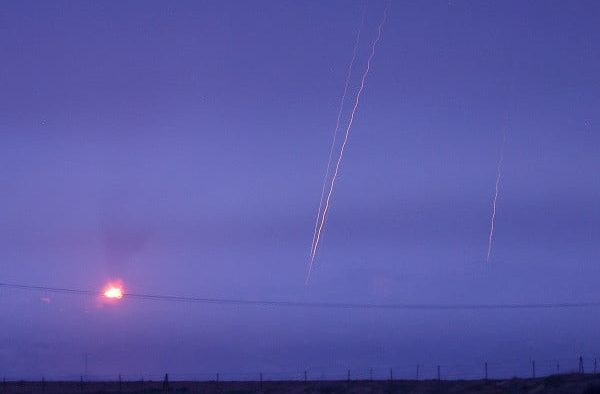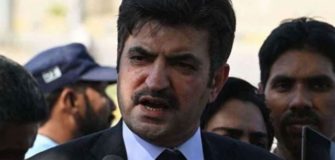17,000 people have died in Gaza, and Hezbollah is still applying pressure to the northern Israeli border

In the assault that has left the beleaguered enclave in ruins and taken thousands of Palestinian lives, the Palestinian resistance group Hamas engaged in combat with invading Israeli forces on Friday in and around Gaza’s main cities.
The Palestinian Health Ministry reported that over 17,000 people have died in Gaza, the majority of them women and children. Large swathes of the city have been left to a wasteland of demolished and bullet-scarred structures.
The health ministry said early on Friday that there had been 40 more deaths in attacks close to Gaza City and “dozens” more in Khan Yunis and Jabalia.
Refaat Alareer, a poet from Palestine who was leading a new wave of Gaza writers telling their stories in English, was slain in an Israeli attack overnight on Thursday, according to his friends.
As part of their effort to crush Hamas, Israeli forces claimed to have surrounded important urban areas. Resistance fighters, however, have persisted in striking back and dealing the invading forces casualties.
US President Joe Biden “emphasised the critical need to protect civilians and to separate the civilian population from Hamas” during a phone conversation with Israeli Prime Minister Benjamin Netanyahu on Thursday, according to a statement from the White House.
“Corridors that allow people to move safely from defined areas of hostilities” was another demand made by Biden.
Israeli forces are fighting in Gaza City and the Jabalia area in the north, as well as in Khan Yunis, the largest city in the southern region, with the support of tanks, armored bulldozers, and air power.
With the promise that “it is only a matter of time until we find him,” Israeli Prime Minister Benjamin Netanyahu announced on Thursday that troops had converged on the Khan Yunis residence of Yahya Sinwar, 61, the leader of Hamas in Gaza.
Strong reactions were seen on social media on Thursday when Israeli television stations broadcast footage of Palestinian males in Gaza who were blindfolded and only wearing their underpants while being watched over by Israeli soldiers. According to reports, the guys were apprehended from a neighboring school where they were taking refuge with their families in order to avoid the deadly Israeli shelling.
Another photo reported to be showing captured Palestinians in Gaza by IDF. pic.twitter.com/XEIAUMqtTZ
— Clash Report (@clashreport) December 7, 2023
Israeli army spokesman Daniel Hagari stated at a press briefing, “We are investigating to see who is linked to Hamas and who is not.”
Rafah, which is close to the Egyptian border, has become a large camp for many of the 1.9 million people who have been forced from Gaza due to the fighting—80 percent of the city’s total population.
“I was traveling for two months, going from place to place. “These past two months have been the most difficult times in our lives,” stated Abdallah Abu Daqqa, who was relocated from Khan Yunis to Rafah.
They have been followed by airstrikes.
Overnight, eight more hit Rafah. At the Nasser hospital, AFP journalists observed about twenty bodies—including a child—in white body bags, while men congregated outside to offer prayers.
Global outrage has been aroused by the conflict’s large-scale civilian casualties, which have been made worse by the severe shortages brought on by an egregious Israeli siege that has restricted access to gasoline, food, water, and medical supplies.
In order to avert a “humanitarian collapse and the outbreak of epidemics,” Israel has authorized a “minimal” increase in fuel supplies.
According to UN humanitarian head Martin Griffiths, there are “promising signs” that Israel would allow relief supplies through the southern Kerem Shalom border.
Declaring that no humanitarian aid has reached northern Gaza since December 1, Hamas has proclaimed a “state of famine” there.
The “minuscule amount of aid” that is permitted into the region, according to Israeli rights organization B’Tselem, “tantamounts to deliberately starving the population”.
“Even without the use of bombs and rockets, we are dying here. Abdelkader al-Haddad, a resident of Gaza City who is currently in Rafah, stated, “We are dead already, dead from hunger, dead from displacement.”
In response to UN Secretary-General Antonio Guterres’ uncommon use of Article 99 of the organization’s charter, the Netanyahu administration has been enraged and has called on the Security Council to press for a ceasefire.
Israeli soldiers celebrating the destruction of Gaza as they demolish a compound of Palestinian university. pic.twitter.com/jxPhNCkPqD
— Clash Report (@clashreport) December 7, 2023
According to the Ecuadorian delegation, which is chairing the Security Council this month, the United Arab Emirates has drafted a draft resolution that will be submitted to a vote at the council on Friday.
The Gaza humanitarian situation is described as “catastrophic” in the most recent version of this letter, which AFP saw on Thursday, and it “demands an immediate humanitarian ceasefire.”
The Israeli military claims that 91 Israeli soldiers have died as a result of the combat in Gaza thus far; however, the actual toll is likely significantly higher. On Thursday, the military announced the deaths of four more people, one of whom was the son of Defense Cabinet Minister Gadi Eisenkot.
During a briefing on Thursday, the Israeli military declared that they had invaded a military site belonging to Hamas’s Central Jabalia Battalion and “killed Hamas terrorists and struck dozens of terror targets” near Khan Yunis.
According to Hamas, the Israeli army is being opposed “on all axes of the incursion into the Gaza Strip”.
Israeli security forces carried out an operation in the West Bank city of Ramallah early on Friday, according to Wafa, the official news agency of the Palestinian Authority.
Hezbollah in Lebanon has been involved in almost daily exchanges across the Israel-Lebanon border, which is monitored by the UN.
According to the Israeli army, a civilian was killed in Israel on Thursday by an anti-tank missile fired from Lebanon.
Netanyahu threatened to “turn Beirut and South Lebanon… into Gaza and Khan Yunis with its own hands” if Hezbollah “chooses to start a global war.”
According to an Agence France-Presse investigation, a tank shell that is exclusive to the Israeli army in this area was used in the October 13 attack in southern Lebanon that resulted in the death of a Reuters journalist and the injuries of six others, including two AFP journalists

I am a dedicated student currently in my seventh semester, pursuing a degree in International Relations. Alongside my academic pursuits, I am actively engaged in the professional field as a content writer at the Rangeinn website.









